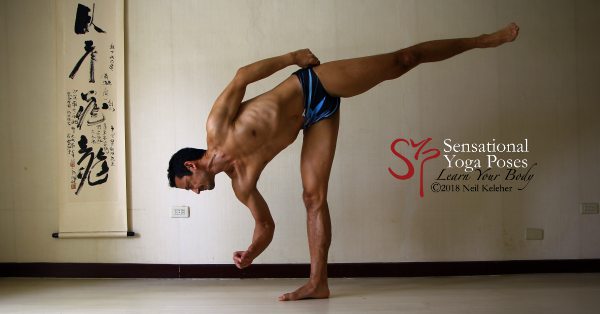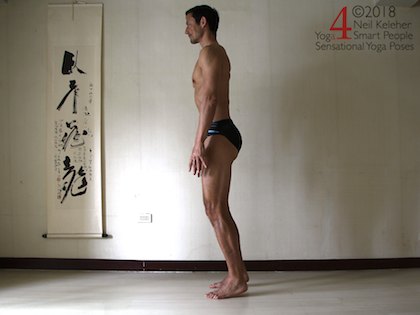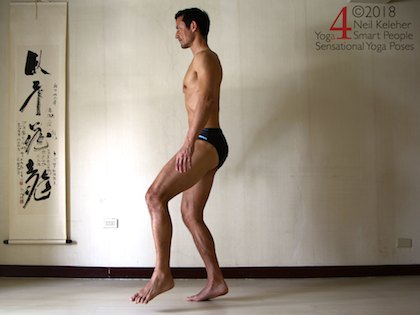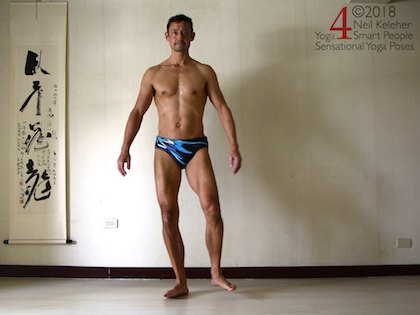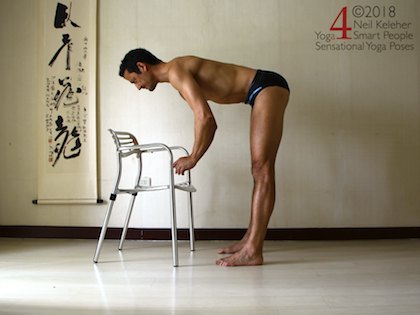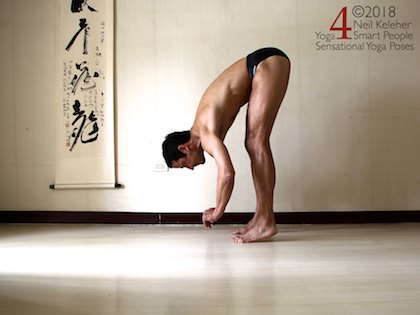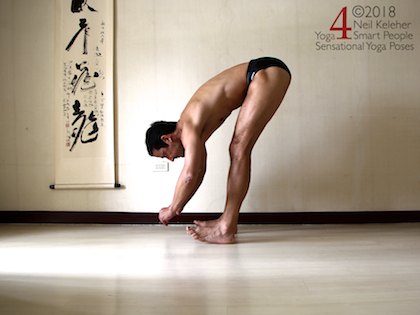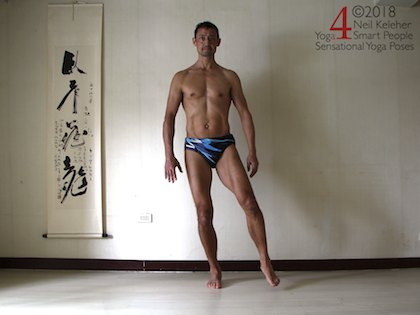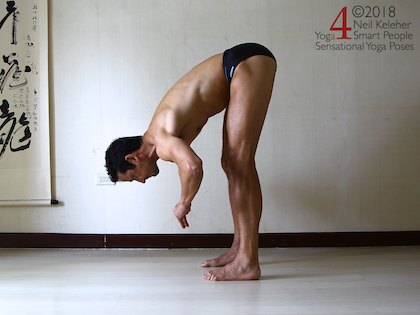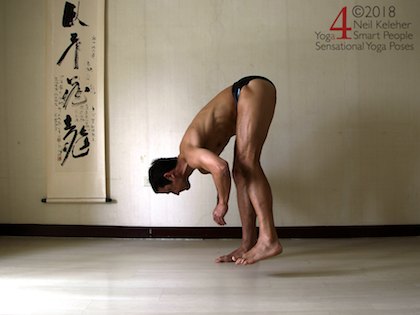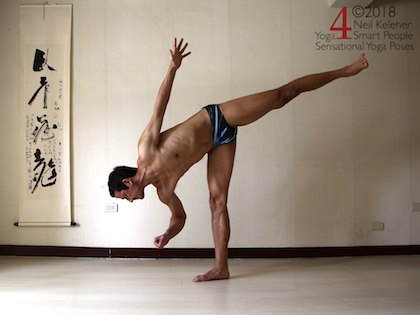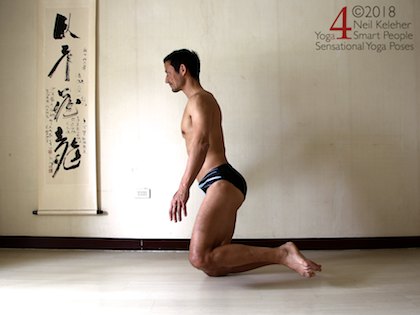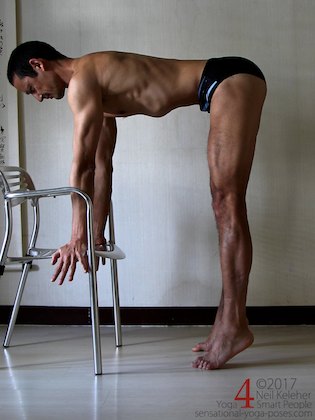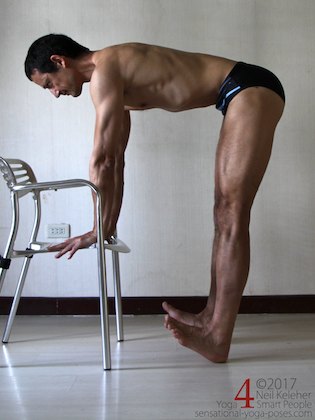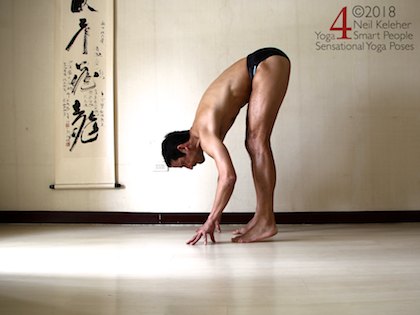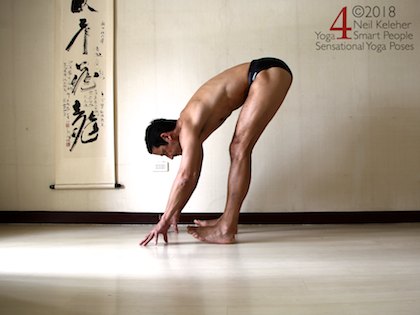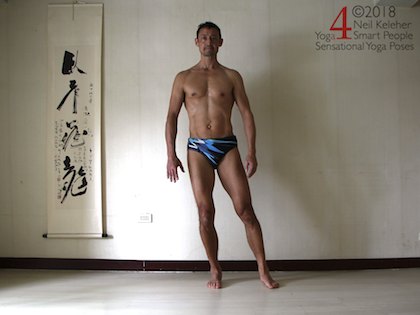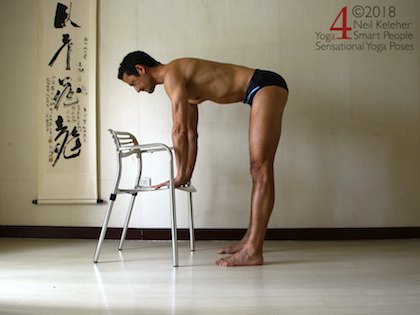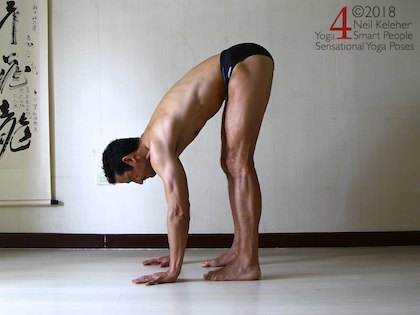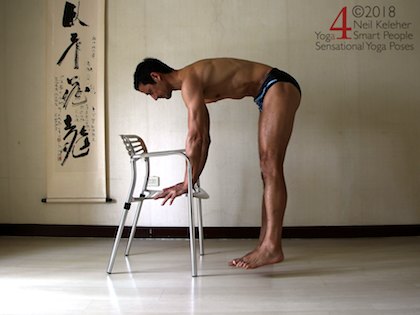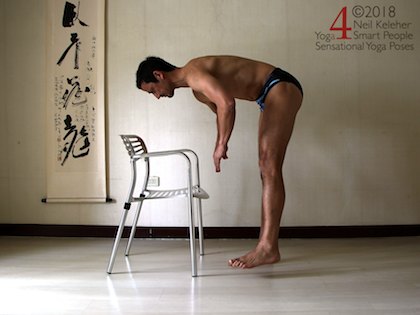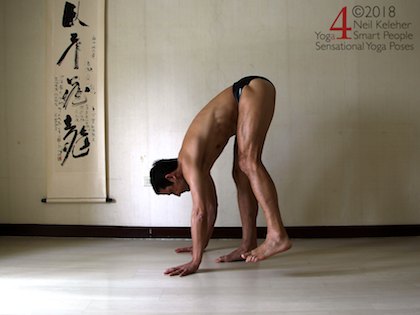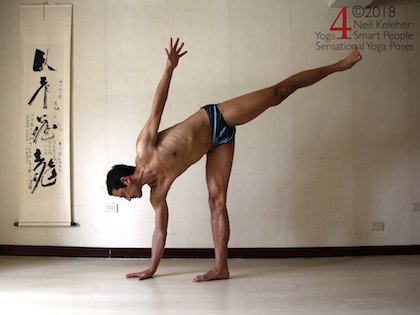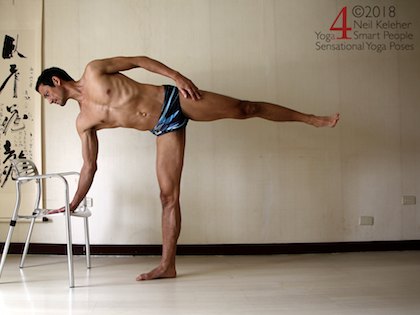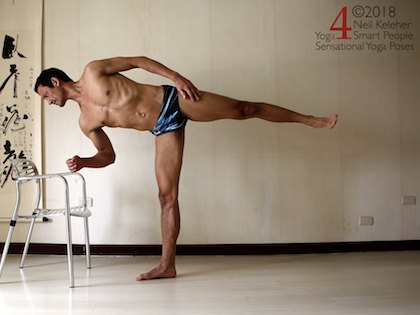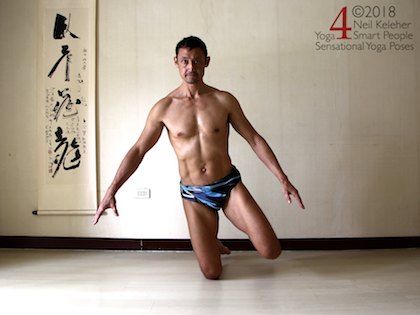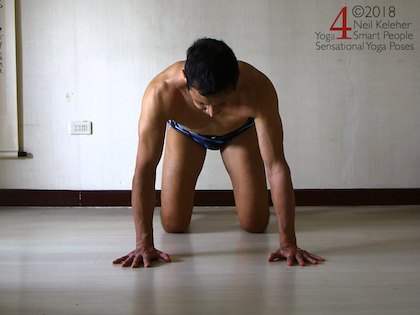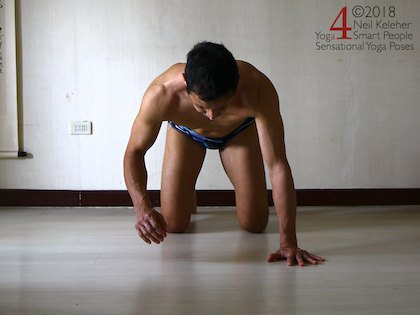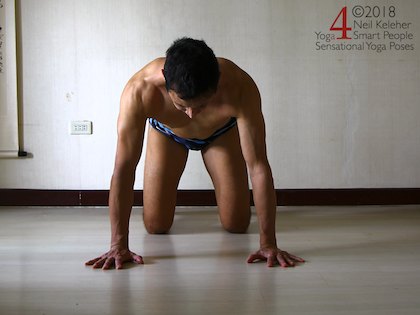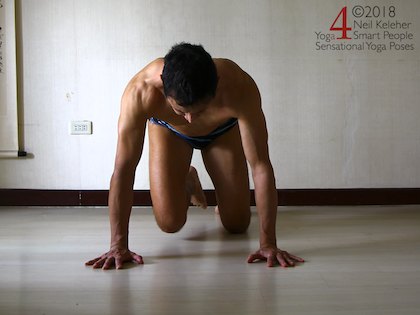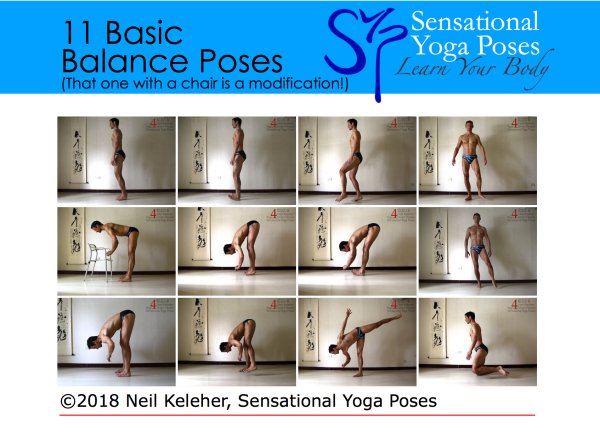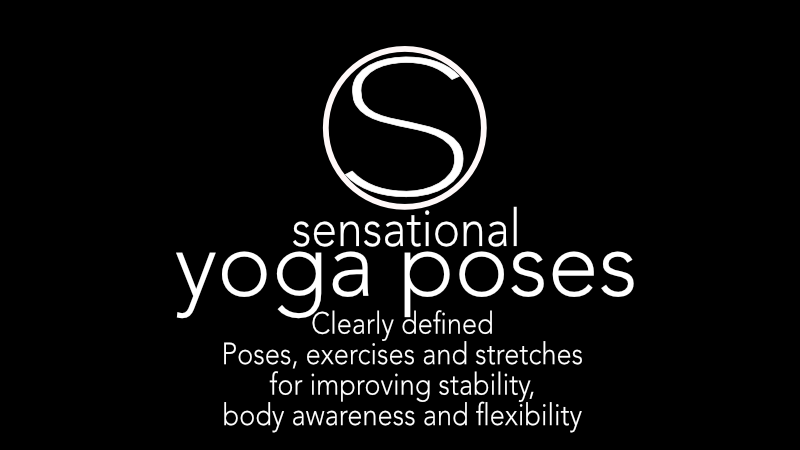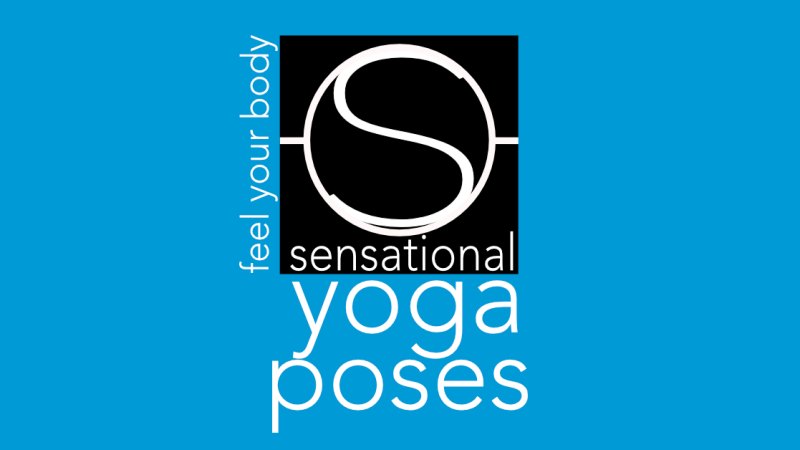11 Basic Balance Poses
Keeping Your Torso Stationary
A simple idea you can work on when practicing these 11 basic balance poses is the idea of keeping your body still. More precisely, work on keeping your ribcage and pelvis still.
To keep your ribcage and pelvis still, you have to be able to feel them. If you can feel them, you can then notice when they start to move.
You can then work at preventing the movement.
Another important idea to make these balance poses easier is to focus on feeling how your foundation presses into the earth.
Two very simple yoga balance poses you can do while standing are balancing on the fronts of your feet with heels lifted and balancing on your heels with forefeet lifted.
To focus on balancing on your forefeet, try lifting your heels only a short distance off of the floor and have your knees slightly bent.
Work at keeping your pelvis and ribcage still.
With the heels only slightly lifted you may find that you don't have to worry too much about your calfs and ankles tiring out.
Hold for 5 seconds or more, then slowly relax and then repeat after a brief rest.
Focus on feeling your forefeet press into the floor.
To balance on your heels try pressing through the back part of your heels.
This is going to be a lot harder to keep stay on your heels. However, even though the idea is to keep your ribcage and pelvis still, that doesn't mean that you can't use your arms to help stay balanced.
For either of these two balancing poses you can still work at keeping your ribcage and pelvis still.
But so that balance is easier, allow your lifted leg to move to help you stay balanced.
Balancing on Heels or Forefeet While Bending Forwards
You can also try doing both of these two balancing actions while bent forwards.
If you can't touch the floor when bending forwards use a chair or a set of yoga blocks and place your hands on that.
To balance on your heels first lift your forefeet with hands on the floor or on the edge of a chair.
Then shift your hips back. Notice when your hands relax and stop the backwards movement of your hips at that point.
Try to relax your hands completely while they are still touching the floor, then try a slight lift of your hands by bending your elbows so that your ribcage remains still.
To stay balanced without moving your ribcage try moving your hands back or forwards to compensate.
With your hands only slightly lifted, you can also use your hands to cheat, lightly touching your hands to the floor to prevent falling.
In this standing forward bend, stand with both feet flat on the floor the idea is to lift and lower your hands from the floor without allowing your body to move.
Lift your hands by bending your elbows.
(Use a chair or yoga blocks if you can't touch your hands to the floor).
Then touch your hands to the floor without allowing your pelvis or ribcage to move.
Engage your feet prior to lifting your hands so that your ribcage and pelvis stay still.
To relax your feet when your hands are on the floor, use your arms.
A more traditional yoga balance pose is half moon pose.
For this pose and the previous pose, try pressing your forefoot into the floor without lifting your heel.
With your hand on the floor you can relax your forefoot. When lifting your hand, press your forefoot down so that you can lift your hand without allowing your ribcage or your pelvis to move. (That includes not allowing your ribcage to lift!)
Lift and lower your hand a few times, holding it lifted for 5 seconds or more.
Using a chair for Half Moon Pose.
In knee balance start in a kneeling position with your hips lifted. Shift your weight to one side and lift the other leg. Try to balance on your knee.
After a few practice runs work at keeping your ribcage and pelvis by allowing only your lifted leg to move to keep balanced.
This next poses could be considered a bonus pose. It isn't actually a balance pose, but there is the same element of body awareness that is used in the previous poses.
In cat pose start with your weight even between your hands and your knees.
Lift a hand without allowing your ribcage or pelvis to move.
Bend the elbow to lift your hand. Then put the hand down again.
Here the idea is to lift one hand while keeping your ribcage and pelvis still.
Repeat the action, holding the hand lifted for 5 seconds or more, and while holding, notice the tension in the arm that is on the floor.
Also notice the difference in tension between the hip on the lifted arm side and the hp (and leg) on the supporting arm side.
You could also do the same exercise but lifting a knee instead.
In this case, so that you can keep your pelvis and ribcage still lift the knee either forwards or rearwards.
You can read more about this in Bird Dog
Published: 2018 03 31
Updated: 2023 03 26
